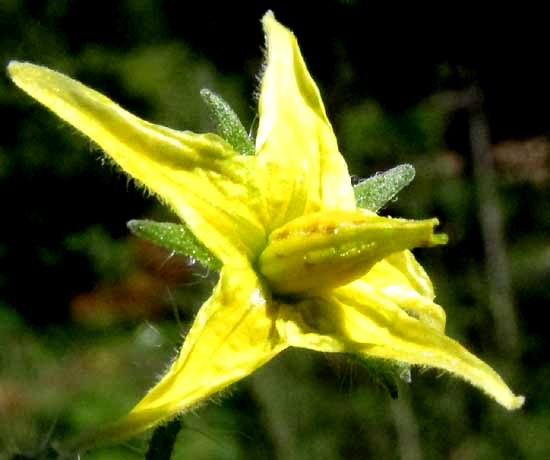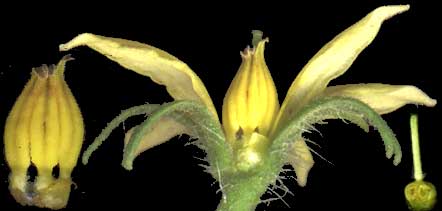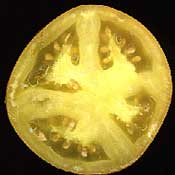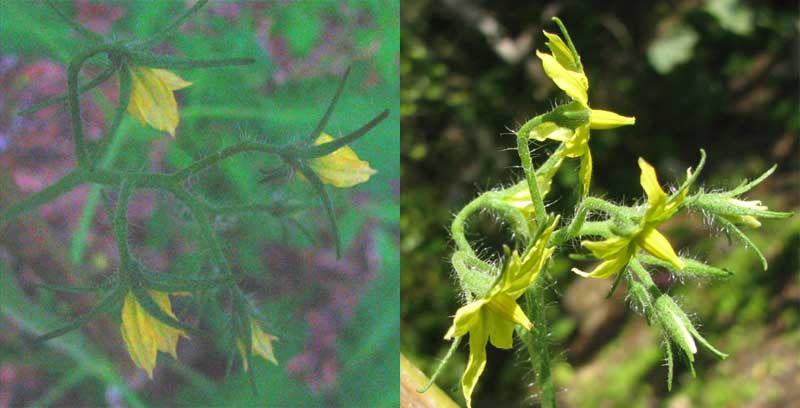
A tomato flower is similar to our Standard Blossom" in that it bears five sepals and a typical pistil consisting of stigma, style and ovary. However, the corolla has five lobes arising from a cup-like base, instead of five distinct petals. The blossom bears five stamens like our Standard Blossom, but the stamens are unusual in that their anthers fuse with one another along their margins, forming a cylinder around the style. Also, instead of splitting open along the sides to release pollen, the anthers release their pollen through tiny pores at the tips. In short, in the tomato flower, the anthers are the most unusual feature.
Below, a tomato flower is broken open to show the various main parts:

In that picture, from left to right, you see the five stamens' anthers fused together along their margins, plus that the anthers are of slightly different lengths and form. The tomato flower in the center shows how the style slightly extends beyond the top of the cylinder formed by the anthers, and is tipped by a small, flat stigma. At the far right, the style is shown connecting with the ovary, the future tomato.

Anyone who has paid attention to a slice of tomato has seen interesting patterns like that displayed at the left. If you make such a cross-section of any flower's ovary, you'll find the basic idea expressed by the patterns in a slice of tomato, though other ovaries will display different variations on that basic theme.
The basic theme is that the ovary mature into a fruit, and its ovules (in our tomato-slice picture, the tiny grains looking like ornaments on a Christmas tree) will mature into seeds. Our tomato slice is divided into four irregularly shaped compartments, called carpels. Our Standard Blossom's ovaries have 5 equally sized and shaped carpels, but ovaries of flowers in other species may have more or fewer, and many display just one compartment, thus showing no subdivision at all. The tomato's ovary has sloppy-shaped carpels because through the domestication process its genes have been scrambled a bit, so some of Nature's habitual neatness in such matters has been abandoned in favor of human tastes and needs.
Finally, there's the interesting fact documented below:

On the left in the above picture, tomato flowers that had been open all day are closing up as dusk's last light diminishes to darkness. At the right, you see the flowers re-opened the next morning. On the Internet, in 2021, some sources claim that tomato flowers remain open at night, others report their closing. The above photo definitely shows the tomatoes closing at night, but who knows why, or whether all tomato flowers do the same?